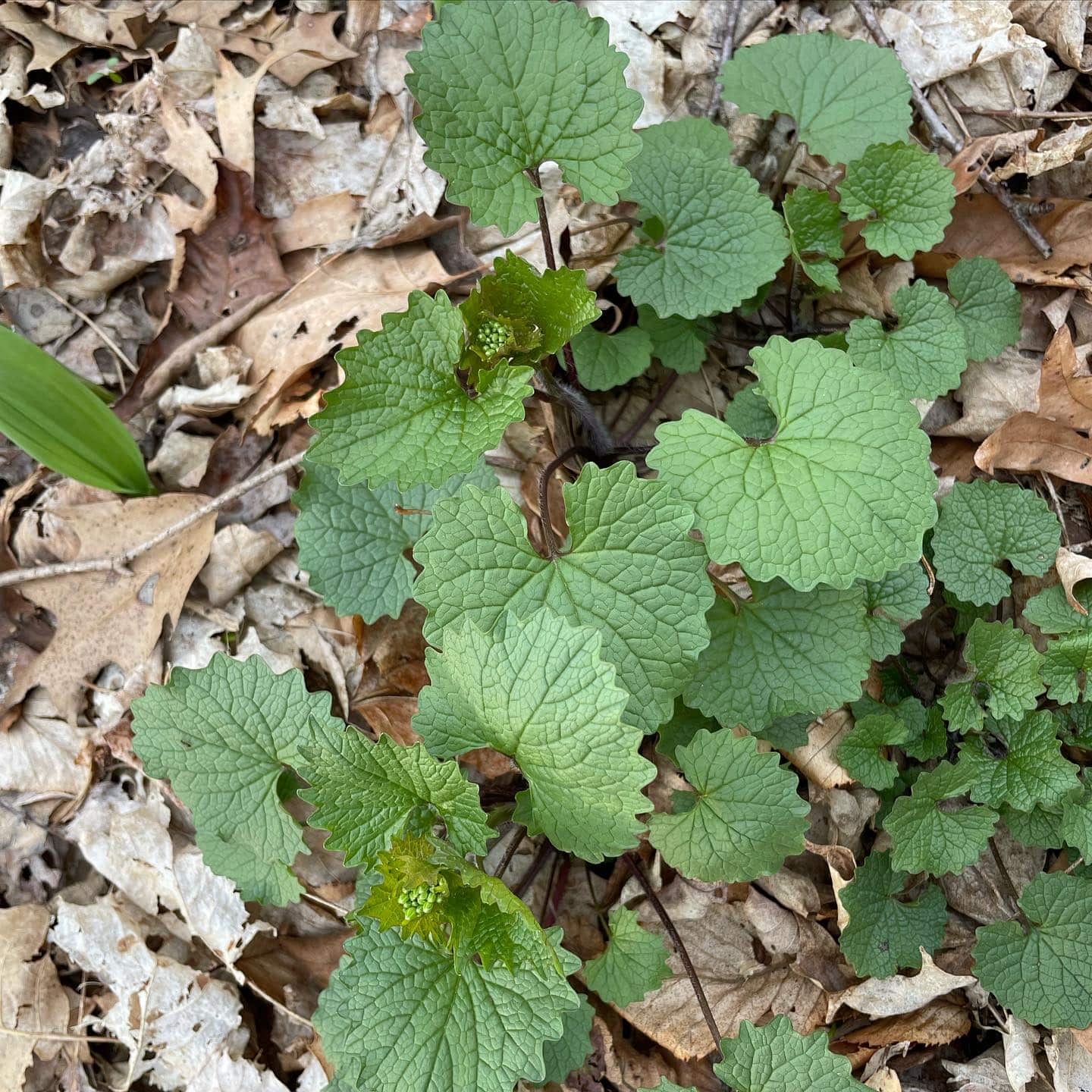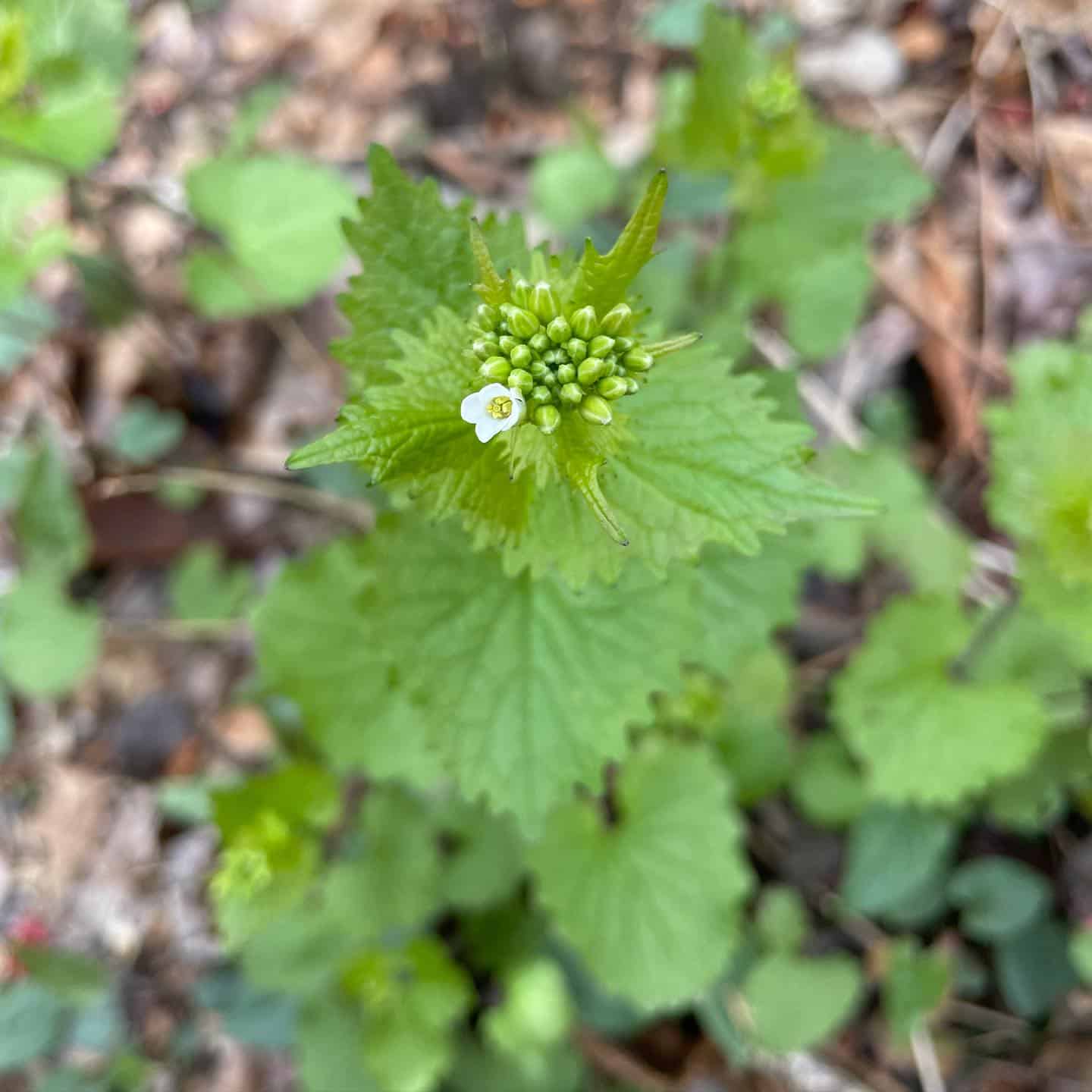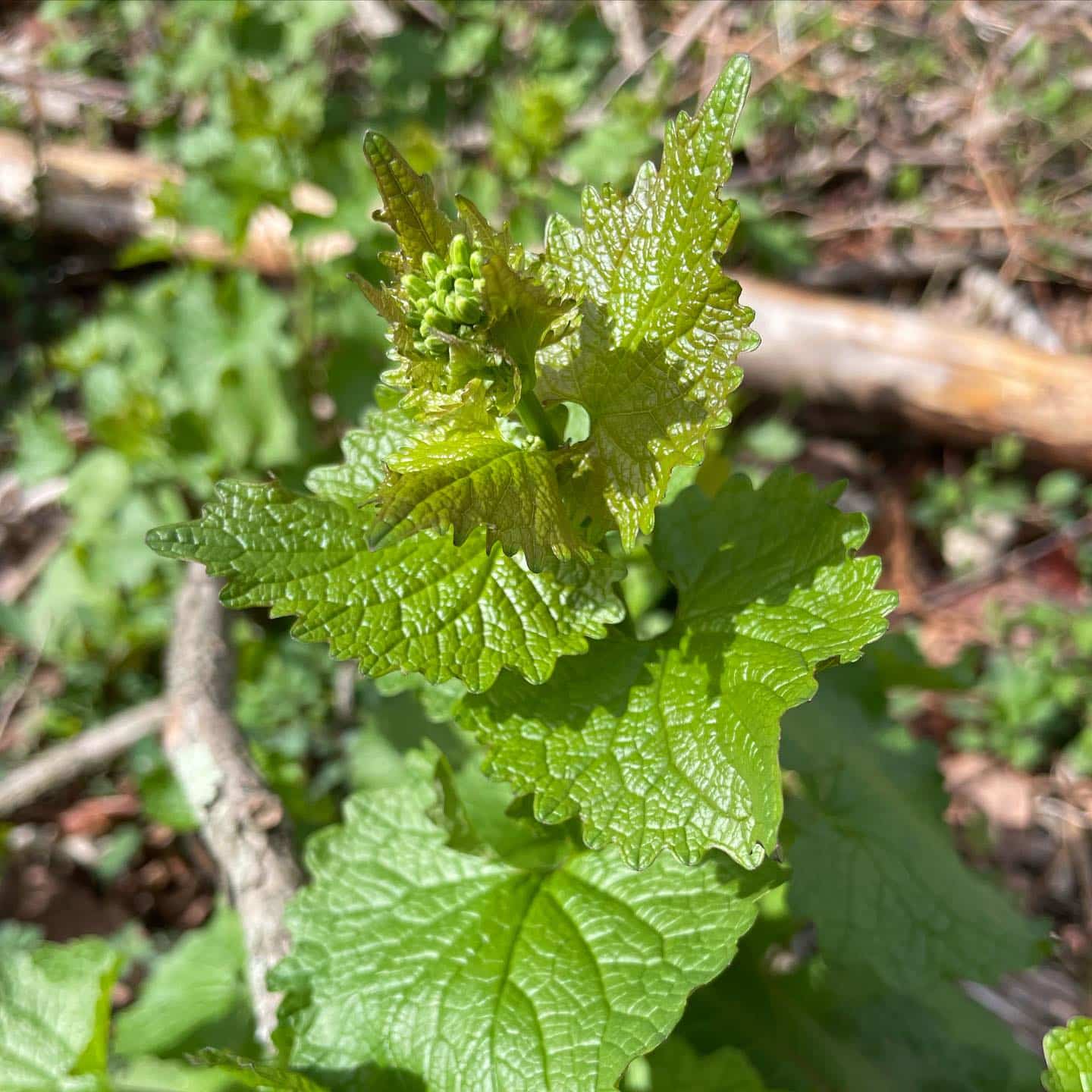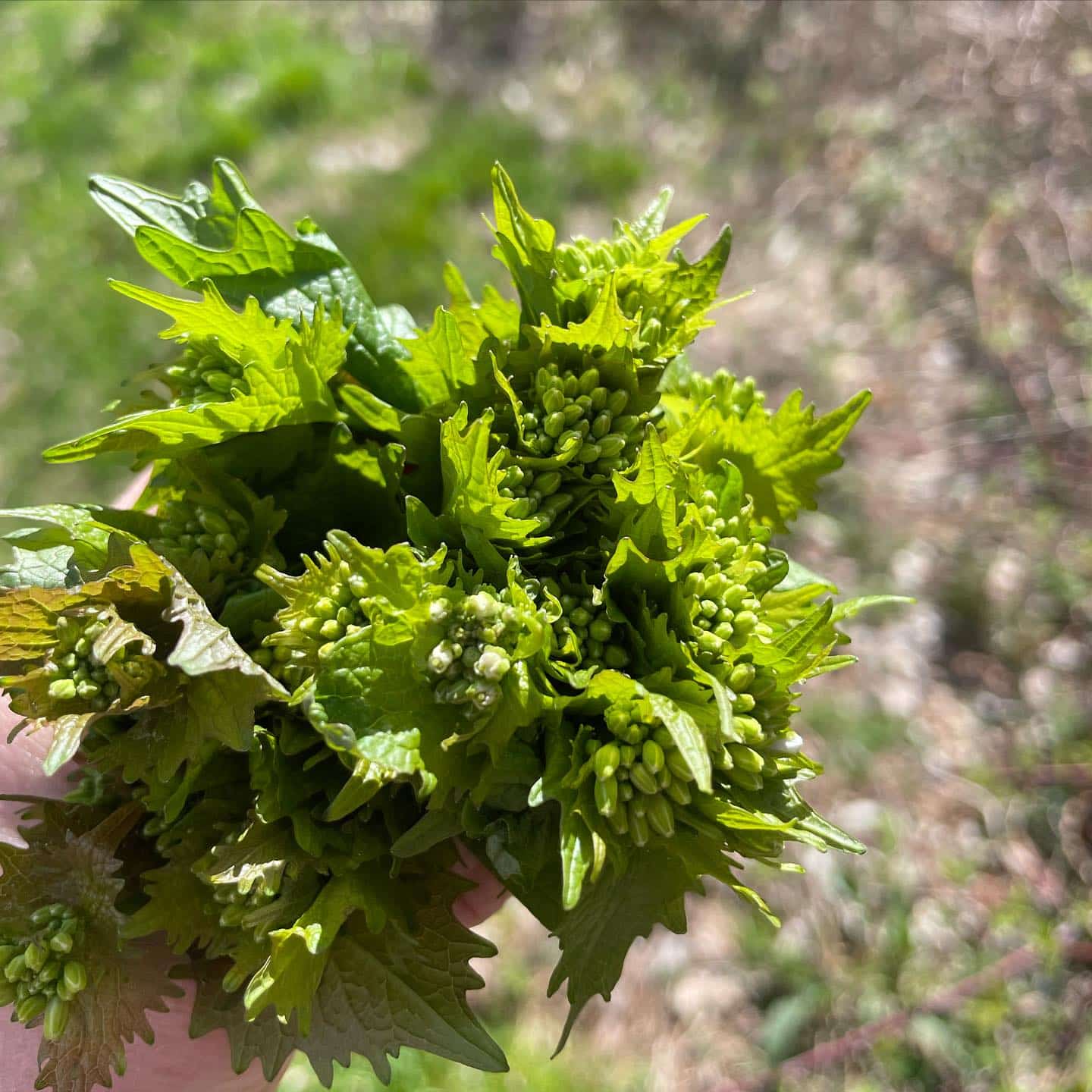Page Created by Connecticut Foraging Club
Upcoming Events | Meet the Instructors | Plant Archive | Mushroom Archive
----------------
Upcoming Events | Meet the Instructors | Plant Archive | Mushroom Archive
----------------
Garlic mustard (Alliaria petiolata) is an edible invasive plant in the mustard family.

Garlic mustard can be found in human-disturbed areas, shaded field edges, and woodlands. It has the ability to take over woodlands and kill off 90% of all other herbaceous plants. Garlic mustard has no native predators and seeds can last up to 12 years. It is also allelopathic, producing chemicals that suppress mycorrhizal fungi that are needed for other plants to thrive.

Garlic mustard can be identified by its dark green leaves with a wrinkled surface and scalloped edges. Leaves become more heart-shaped with age. The plant has a garlicky aroma when crushed. It produces white flowers with four petals in late spring.
The entire garlic mustard plant is edible. Germinating seeds can be used like microgreens. Young leaves are edible raw or cooked. They taste like broccoli rabe with extra garlic but become bitter with age.

Flower stalks with immature flower heads can be collected and used like broccoli rabe. Flowers are also edible.
The plant produces a small, branching whitish taproot that can be grated and used to make a horseradish substitute.

Seed heads can be collected in early summer and used like mustard seeds.
Garlic mustard is high in pro-vitamin A and vitamin C. It also has anti-cancer properties.
Hand pulling garlic mustard with the taproot before the plant sets seed can help to control its spread.
--
Written by Amy Demers, founder of the Connecticut Foraging Club. To learn more about foraging in Connecticut, check out our upcoming classes.






